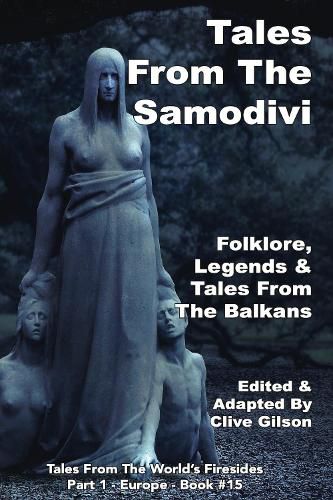Readings Newsletter
Become a Readings Member to make your shopping experience even easier.
Sign in or sign up for free!
You’re not far away from qualifying for FREE standard shipping within Australia
You’ve qualified for FREE standard shipping within Australia
The cart is loading…






This title is printed to order. This book may have been self-published. If so, we cannot guarantee the quality of the content. In the main most books will have gone through the editing process however some may not. We therefore suggest that you be aware of this before ordering this book. If in doubt check either the author or publisher’s details as we are unable to accept any returns unless they are faulty. Please contact us if you have any questions.
The worlds of folklore and traditional storytelling are fascinating places to visit wherever the land or the people may be Tales from different regions are often shaped by geography and by cultural and historical factors that have accumulated over the course of centuries. At their heart, though, is an ever present desire to explain and understand the world and the experience of living in it day by day.
The Balkan Peninsula is a region in South-Eastern Europe, and has a full and rich history and tradition where cultures have been mixing for at least 2,000 years and Slavic civilisation has had an especially strong influence. The result is diverse and fascinating folklore with its own set of mythical beings and legendary heroes.
One of the more common characters of Slavic mythology is the Samodiva. The Samodiva is a forest spirit in the shape of a beautiful woman who never loses her youthful looks. The Samodivi bathe in forest springs underneath the moonlight and sometimes make young bachelors from the nearby villages play the kaval (a wooden flute) for them. If a man steals a Samodiva’s veil, she becomes an ordinary woman and has to be his wife, but will spend every moment she can looking for her veil to regain her freedom, even if it means leaving her children behind. The Samodivi also protect forest animals.
These tales are taken from collections such as Serbian Folk-lore by Madame Elodie L. Mijatovich, published by The Columbus Printing, Publishing & Advertising Company, 1899, from Hero Tales and Legends of the Serbians by Woislav M. Petrovitch, published in 1914, and from Andrew Lang’s various coloured Fairy Books from the turn of the nineteenth and twentieth centuries.
As ever it’s been a voyage of discovery, with common themes emerging alongside some distinct regional variations and differences. I hope you enjoy these tales.
$9.00 standard shipping within Australia
FREE standard shipping within Australia for orders over $100.00
Express & International shipping calculated at checkout
This title is printed to order. This book may have been self-published. If so, we cannot guarantee the quality of the content. In the main most books will have gone through the editing process however some may not. We therefore suggest that you be aware of this before ordering this book. If in doubt check either the author or publisher’s details as we are unable to accept any returns unless they are faulty. Please contact us if you have any questions.
The worlds of folklore and traditional storytelling are fascinating places to visit wherever the land or the people may be Tales from different regions are often shaped by geography and by cultural and historical factors that have accumulated over the course of centuries. At their heart, though, is an ever present desire to explain and understand the world and the experience of living in it day by day.
The Balkan Peninsula is a region in South-Eastern Europe, and has a full and rich history and tradition where cultures have been mixing for at least 2,000 years and Slavic civilisation has had an especially strong influence. The result is diverse and fascinating folklore with its own set of mythical beings and legendary heroes.
One of the more common characters of Slavic mythology is the Samodiva. The Samodiva is a forest spirit in the shape of a beautiful woman who never loses her youthful looks. The Samodivi bathe in forest springs underneath the moonlight and sometimes make young bachelors from the nearby villages play the kaval (a wooden flute) for them. If a man steals a Samodiva’s veil, she becomes an ordinary woman and has to be his wife, but will spend every moment she can looking for her veil to regain her freedom, even if it means leaving her children behind. The Samodivi also protect forest animals.
These tales are taken from collections such as Serbian Folk-lore by Madame Elodie L. Mijatovich, published by The Columbus Printing, Publishing & Advertising Company, 1899, from Hero Tales and Legends of the Serbians by Woislav M. Petrovitch, published in 1914, and from Andrew Lang’s various coloured Fairy Books from the turn of the nineteenth and twentieth centuries.
As ever it’s been a voyage of discovery, with common themes emerging alongside some distinct regional variations and differences. I hope you enjoy these tales.